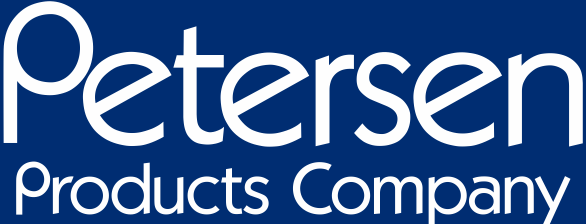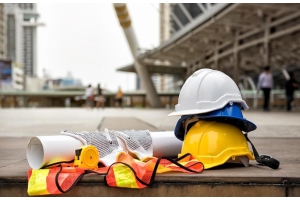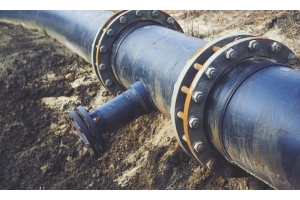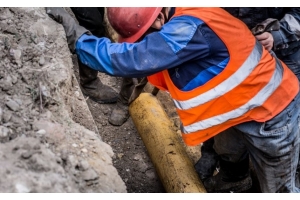Common Causes of a Clogged Drain Line and How to Fix It?


Efficient drainage systems are crucial for smooth industrial & commercial operations. When drain lines get clogged, they can slow down productivity, create safety risks, and increase operational costs. A clogged drain line can lead to serious problems in any industrial facility from halting production lines to creating unsafe working conditions, the consequences can be costly and disruptive.
In this article, we'll explore the most common reasons for these clogs and provide effective strategies to prevent and resolve them. Keeping your drain lines clear is essential for maintaining a safe and efficient operation.
4 Common Causes of a Clogged Industrial Drain Line
In industrial settings, there are several causes of blocked drain lines that happen time and again. Such problems can adversely affect processes causing stoppages and expensive repairs.
Understanding these causes will enable one to feed them into their systems beforehand thus avoiding them thereby initiating preventive action steps that will avert clogs hence ensure smooth flow of operations in your industries. Here are the leading 4 causes for clogged industrial drainage systems:
- Industrial Waste and Debris - Industrial facilities generate a variety of waste which includes chemicals, sludge, and particulate matter. When these materials are disposed improperly, they can build up in drain lines and cause significant blockages. Over time, this waste accumulates and restricts the flow of water and lead to clogs which can impact overall production.
- Grease and Oil Accumulation - Grease, oil, and lubricants are commonly used in industrial environments. While these substances are essential for equipment, they can also cause problems in drain lines. As grease and oil cool, they solidify and adhere to the inside of pipes which gradually forms thick, sticky blockages that are difficult to remove.
- Heavy Machinery and Equipment Residue - Manufacturing processes often produce fine residues like shavings, dust, and small debris. If these materials enter the drainage system, they can combine with other waste to form dense clogs. With time, this buildup of residue can obstruct the flow within pipes and lead to slow drainage or complete blockages.
- Foreign Objects and Tools - In busy industrial environments, it’s common for external objects such as tools, parts, or materials, to accidentally enter drain lines. These objects can quickly create blockages, especially if they get lodged in narrow sections of the sewer line. The presence of foreign objects often requires specialized equipment to remove, making it a challenging and time-consuming issue to resolve.
These common causes highlight the importance of proper waste management and regular maintenance in industrial settings. By addressing these issues proactively, you can help prevent clogs and keep your operations running smoothly.
Clogged Drain Repair | Best Solutions for Fixing Clogged Drain Lines
Dealing with clogged drain lines in industrial settings requires strong solutions designed to handle particular challenges these locations provide. The following are some of the most effective methods for clearing industrial drain lines and keeping them free-flowing.
Advanced Industrial Drain Cleaning Methods
- High-Pressure Hydro Jetting - High-pressure hydro jetting is a powerful technique which uses streams of water at extremely high pressure to blast away tough clogs. This method is highly effective in industrial settings where standard cleaning methods may fail. Hydro jetting tools, such as professional-grade drain flushers, are designed specifically for these tough jobs which cut through thick grease, sludge, and debris, restoring full pipe capacity. Hydro jetting is particularly useful for clearing stubborn blockages in large pipes and complex systems without causing damage to the infrastructure.
- Chemical Drain Cleaners - In some cases, industrial-grade chemical drain cleaners are the best option for dissolving specific types of clogs, such as those caused by organic materials or grease. These chemicals are formulated to break down blockages quickly and efficiently. However, it’s crucial to handle these drain cleaners with care due to their potential safety risks and environmental impact. It is crucial to apply and dispose of these chemicals properly to avoid damaging pipes and harming the environment.
Industrial-Grade Equipment for Drain Cleaning
- Electric Drain Snakes - Electric drain snakes are heavy-duty tools designed to handle larger and tougher blockages in industrial pipes. These equipment are capable of reaching deep into the drain line, using a rotating coil or cutting head to break apart and remove clogs. These snakes are versatile and can be used on various pipe sizes and materials, making them a go-to solution for many industrial drain cleaning tasks.
- Vacuum Excavation - Vacuum excavation is a non-invasive method which uses high-powered suction to remove debris and clogs from pipes. This technique is particularly valuable in industrial settings where traditional methods might damage sensitive or aging infrastructure. Vacuum excavation is effective at clearing out blockages without disrupting the surrounding area, making it a preferred choice for maintaining the integrity of industrial sewer lines. Specialized sewer flushers are often utilized in these scenarios to ensure comprehensive and safe cleaning.
Preventive Maintenance To Avoid Clogged Drain Lines
Maintaining clear and functional drain lines is crucial for avoiding disruptions and costly clogged drain repairs. Here are some key strategies for effective preventive maintenance in industrial settings:
Regular Maintenance Schedules
Establishing a routine cleaning and inspection schedule is essential for preventing clogs before they become serious problems. Regular maintenance helps identify and address issues early, minimizing unexpected downtime and ensuring continuous operation. Predictive maintenance, which uses data and analytics to forecast potential issues, can further help in planning maintenance activities and reducing emergency repairs.
Employee Training and Best Practices
Educating staff on proper disposal practices and the importance of maintaining drain systems is critical. Implementing protocols to prevent foreign objects and debris from entering the drains helps avoid clogs and damage. Proper training ensures that employees understand how their actions impact the drainage system and adhere to best practices to keep it running smoothly.
Use of Specialized Filters and Traps
Installing industrial-grade filters and grease traps can significantly reduce the risk of clogs. Filters capture debris before it enters the drain line, while grease traps prevent oil and grease from causing blockages. These measures help keep the drainage system clean and functioning efficiently.
Investing in Smart Sensors and Real-Time Monitoring Systems
IoT-enabled smart sensors continuously monitor flow rates and detect early signs of blockages, providing real-time data that helps prevent clogs by alerting maintenance teams to potential issues before they escalate. Complementing this, continuous monitoring systems offer ongoing oversight of large-scale industrial operations, detecting problems quickly and allowing for prompt action to address issues and maintain efficient operations.
Conclusion
Addressing clogged drain lines promptly is essential for maintaining industrial efficiency and preventing costly disruptions. Regular maintenance, using drain and sewer cleaning tools, and proper staff training are key components in preventing and resolving clogs. Industries should consider consulting with professionals to develop customized solutions tailored to their specific needs, ensuring the longevity and reliability of their drainage systems.
Disclaimer: Use any product or process in accordance with all applicable laws, including federal, state, and local regulations, and with manufacturer-specified instructions.






